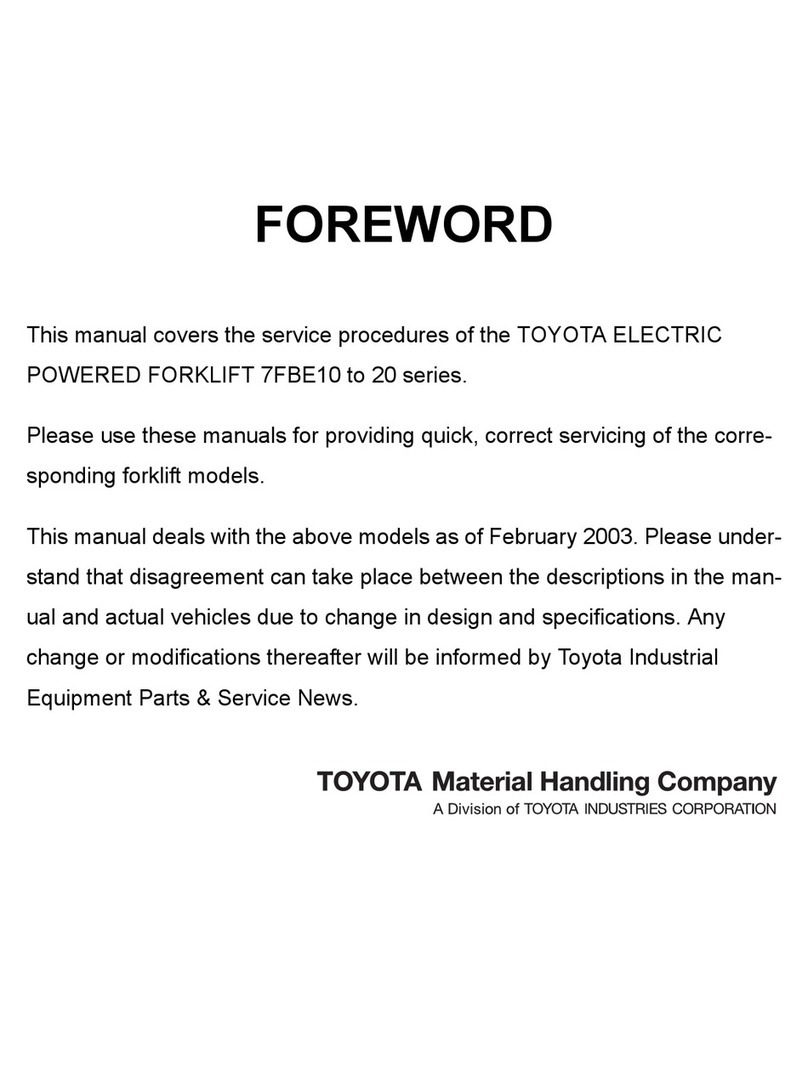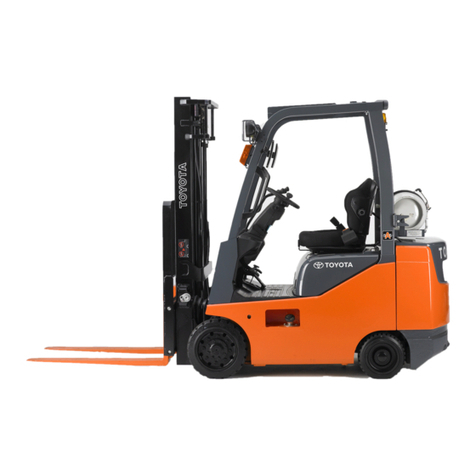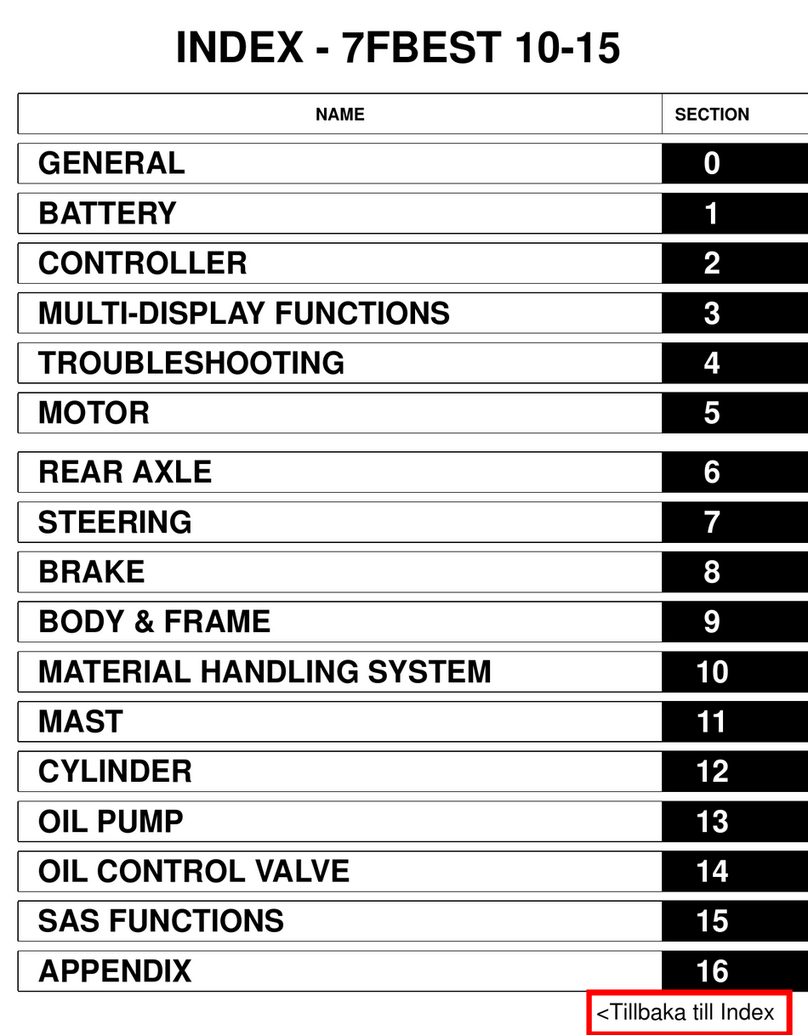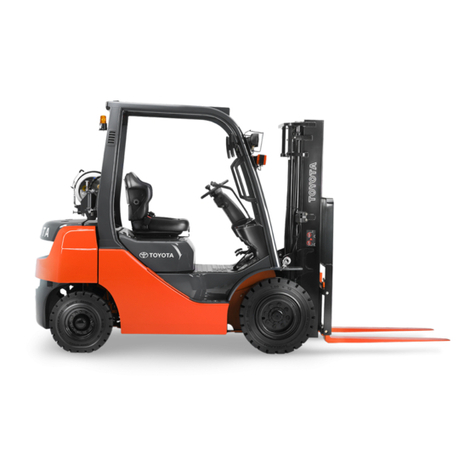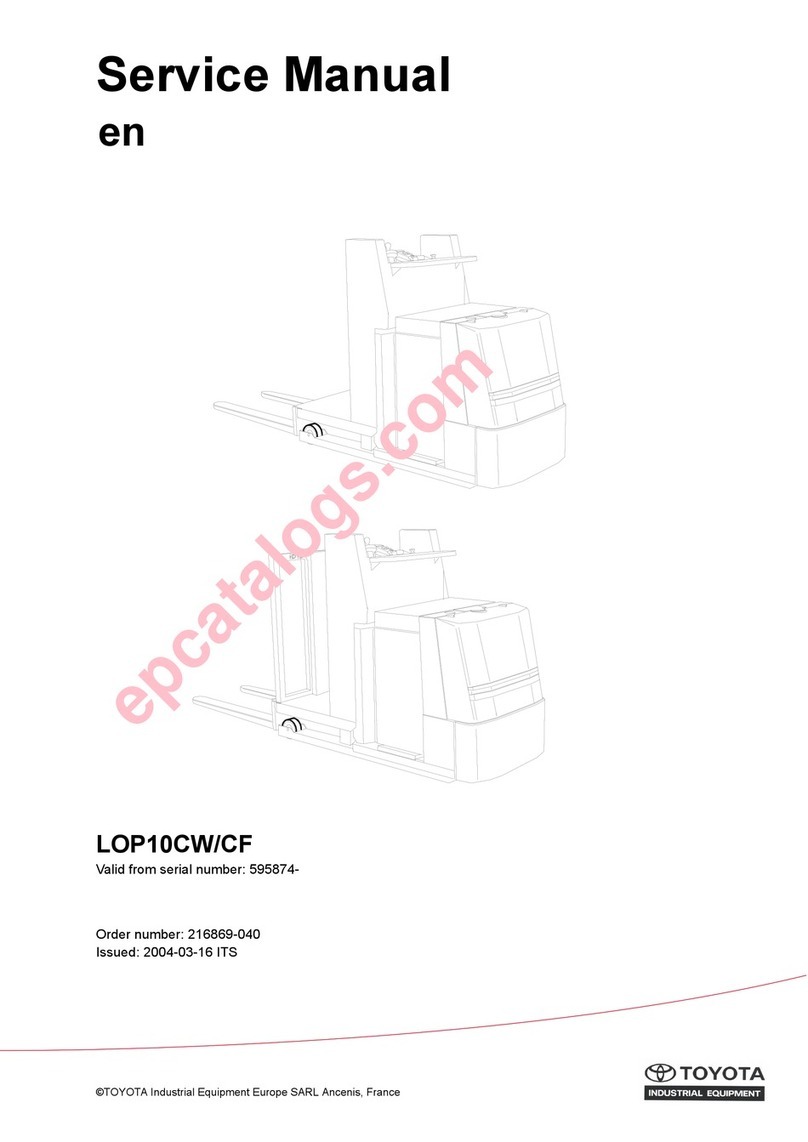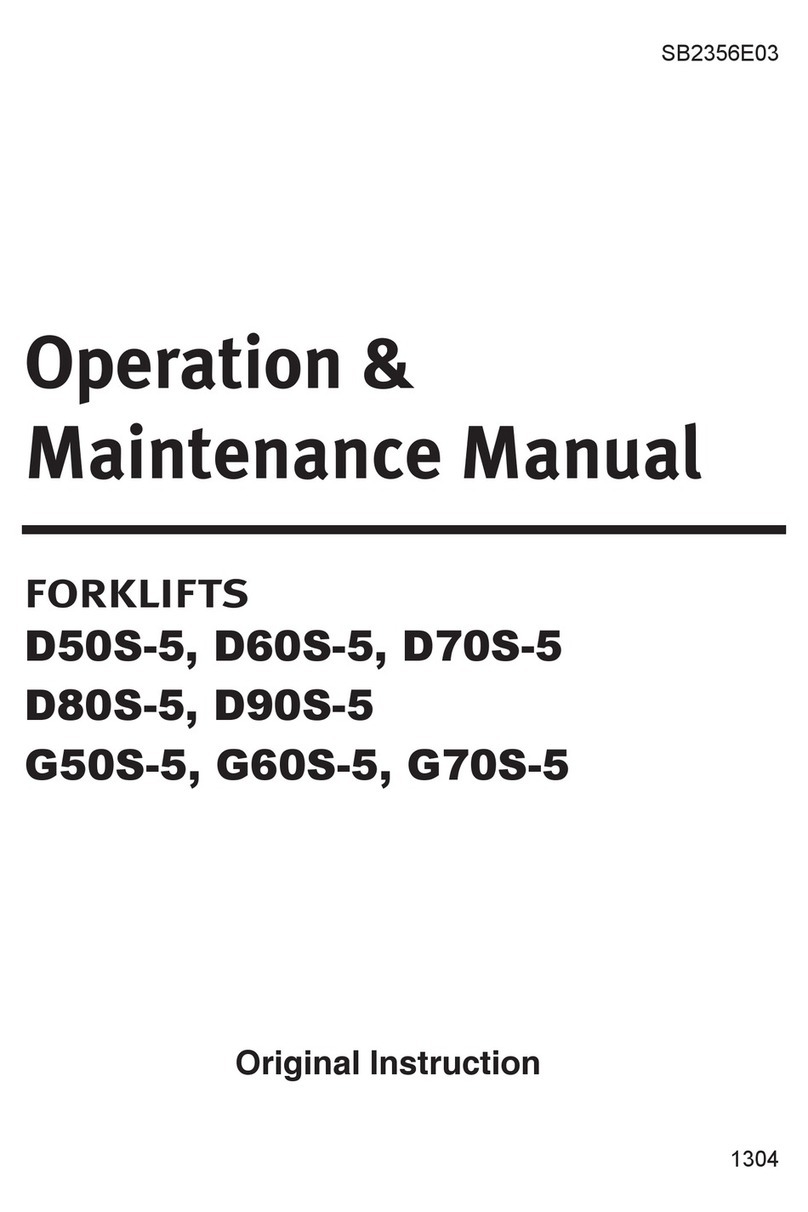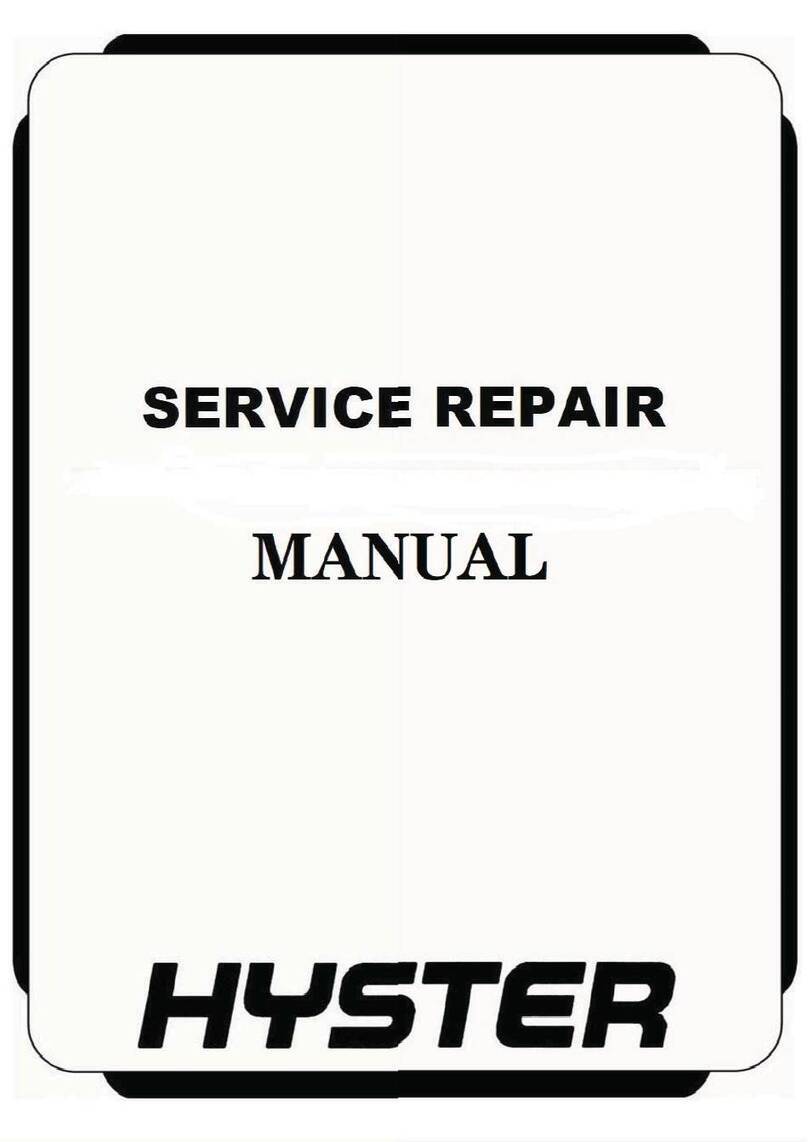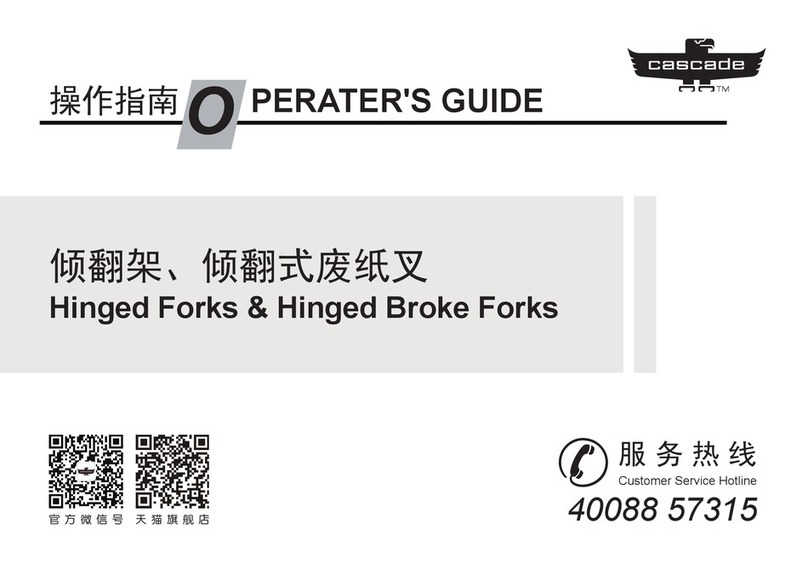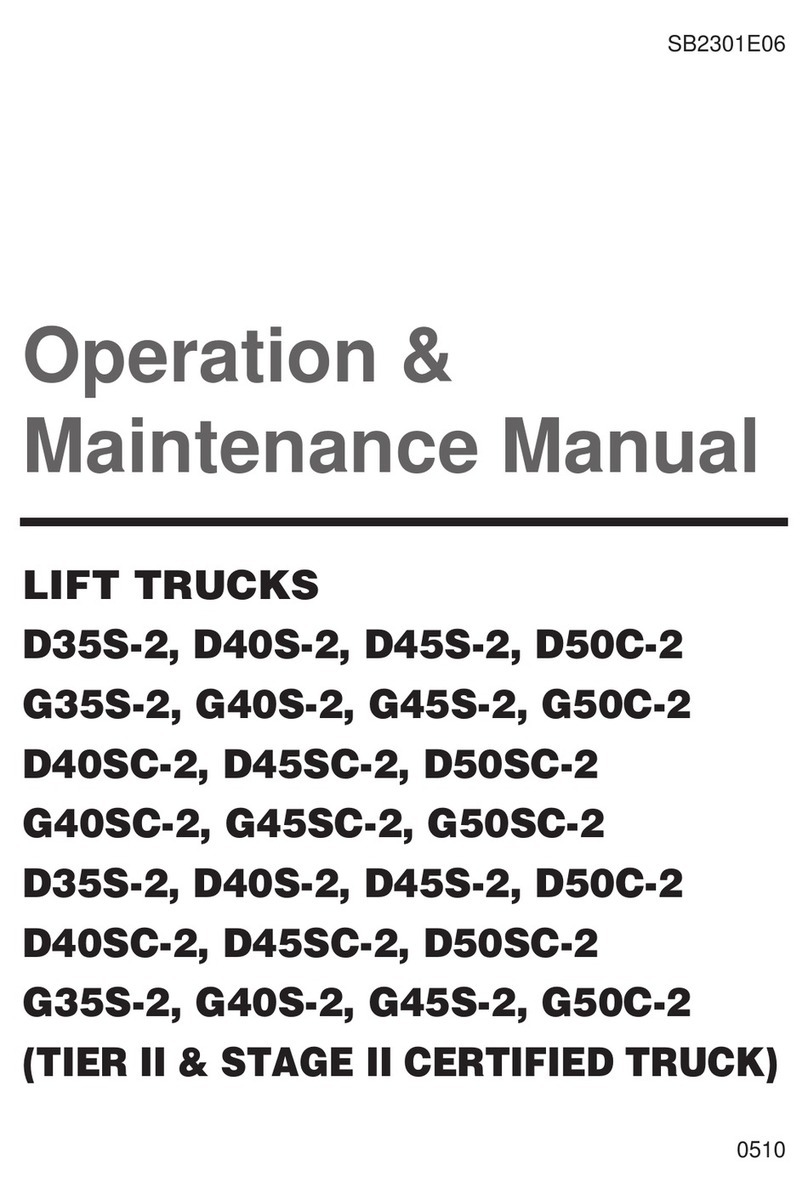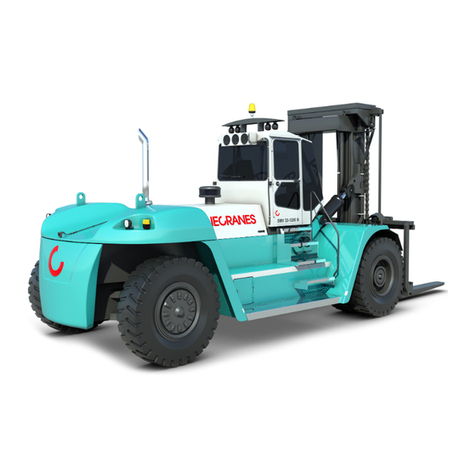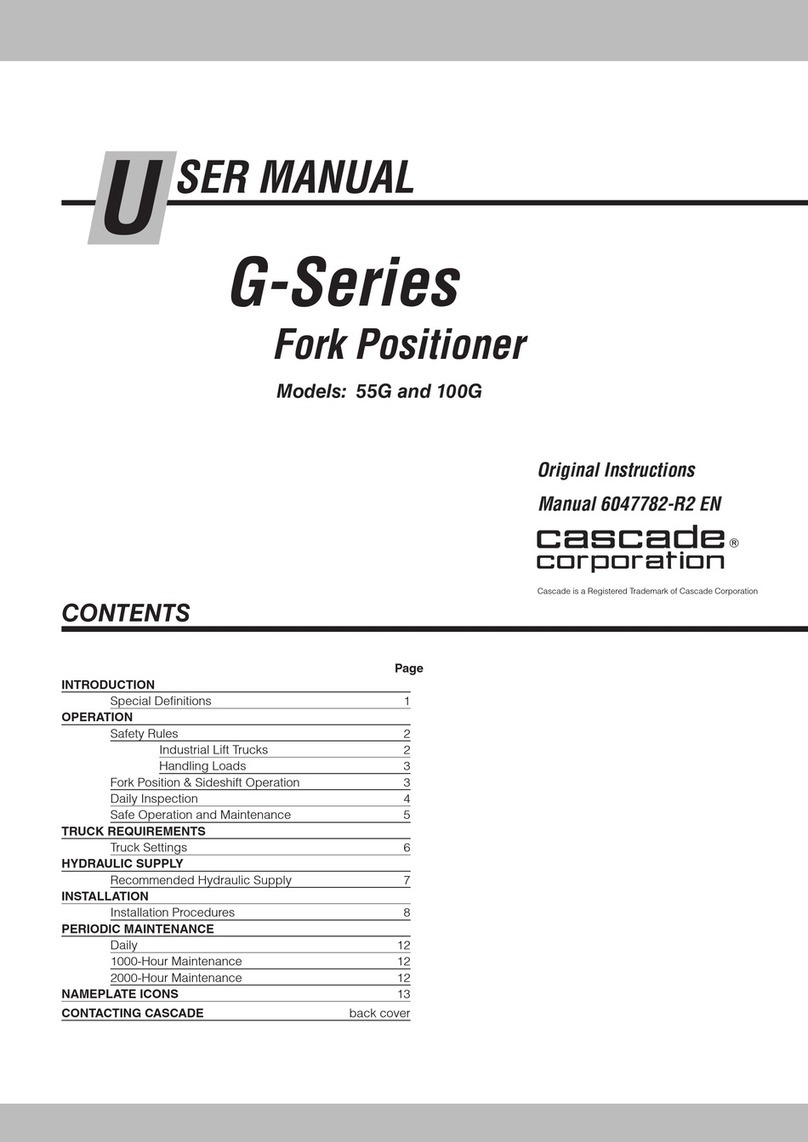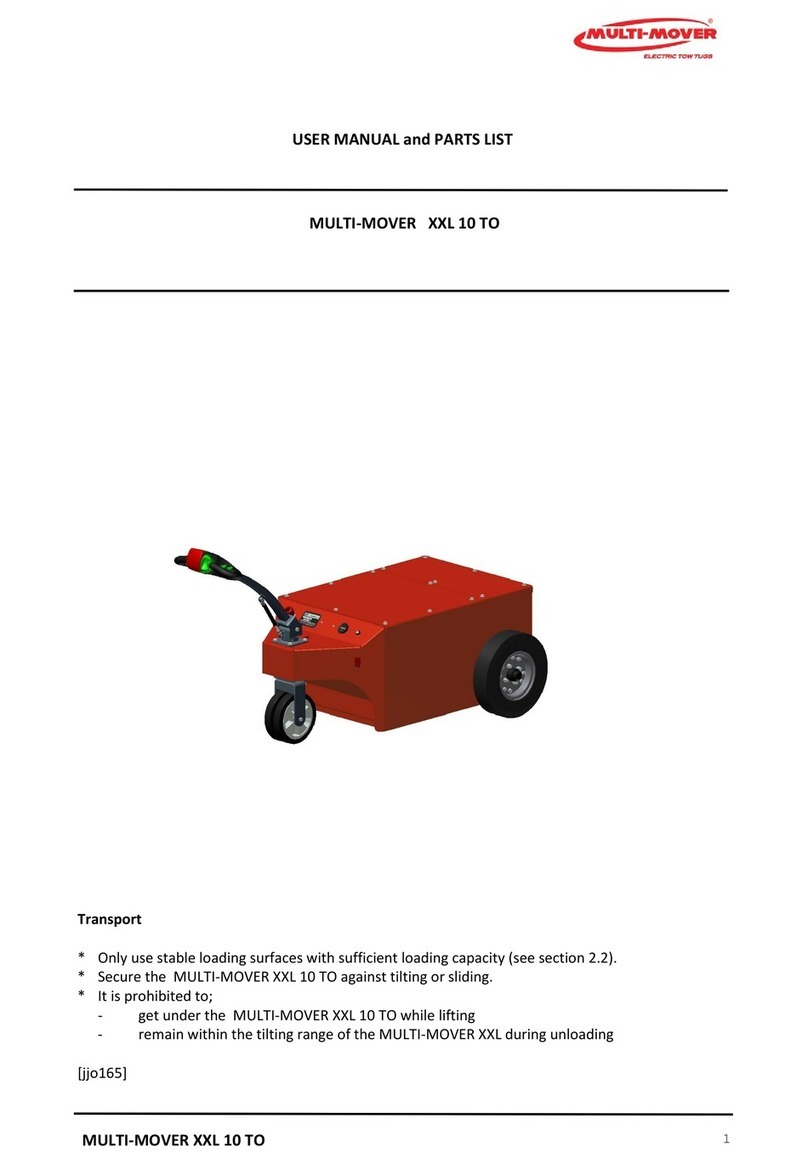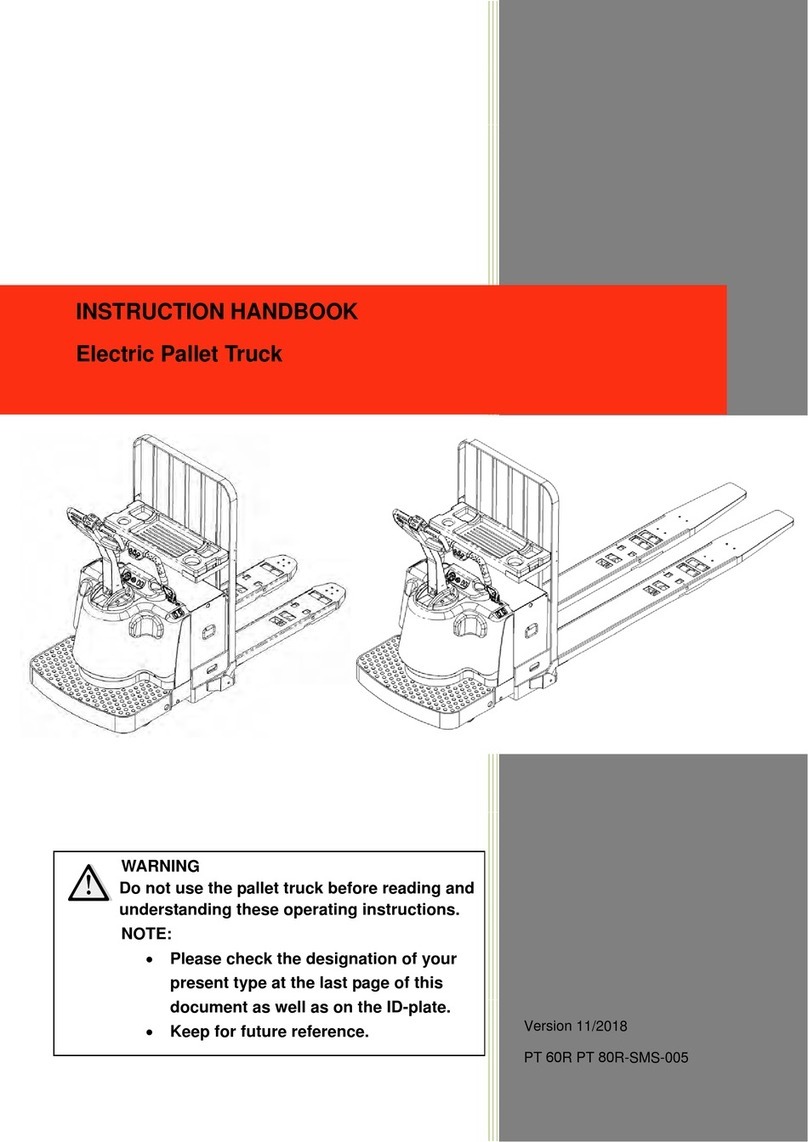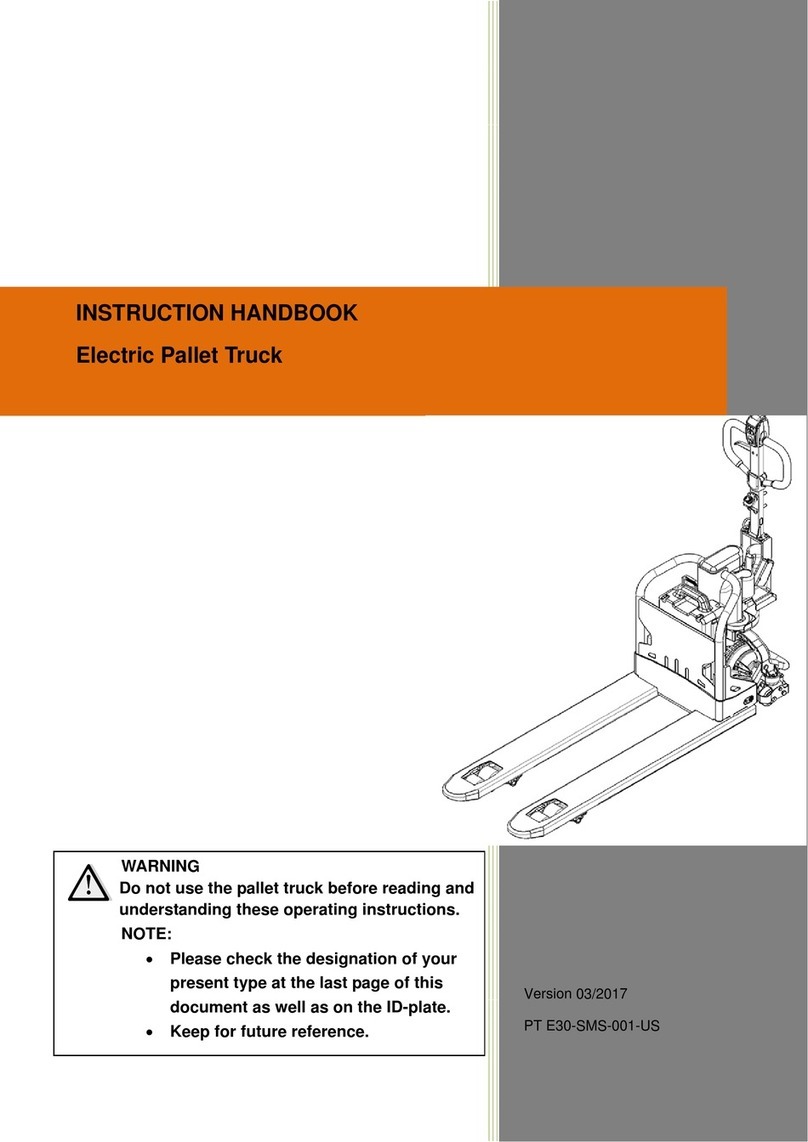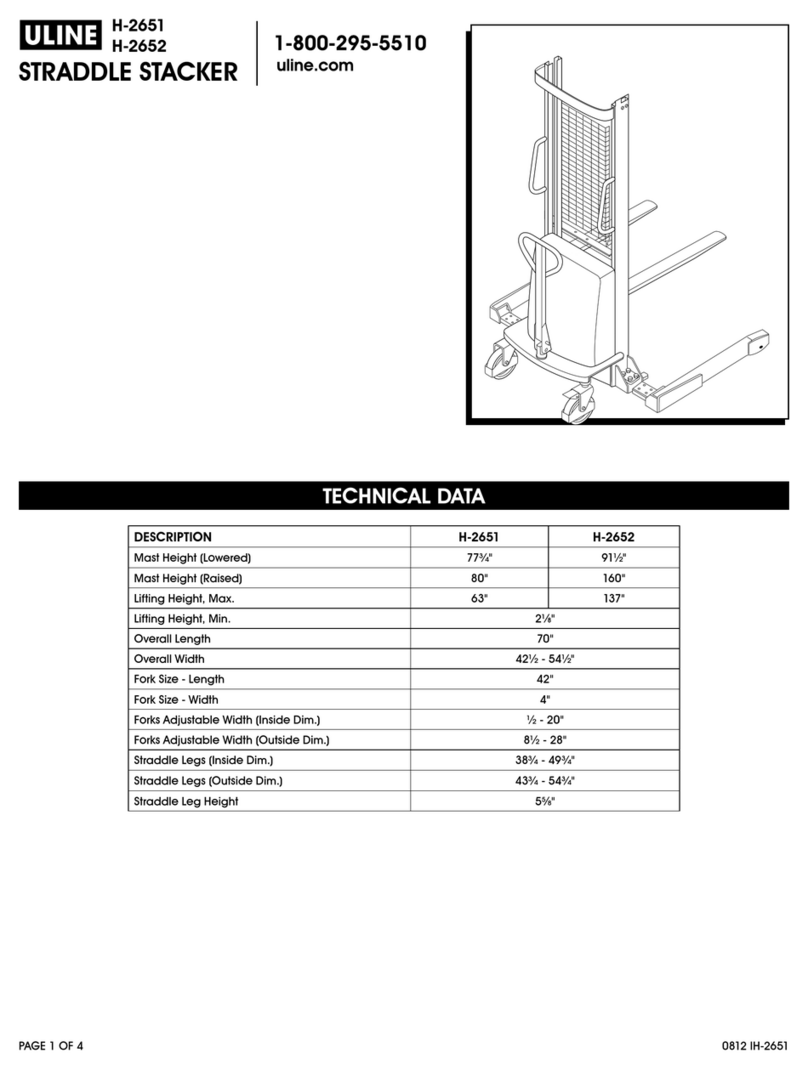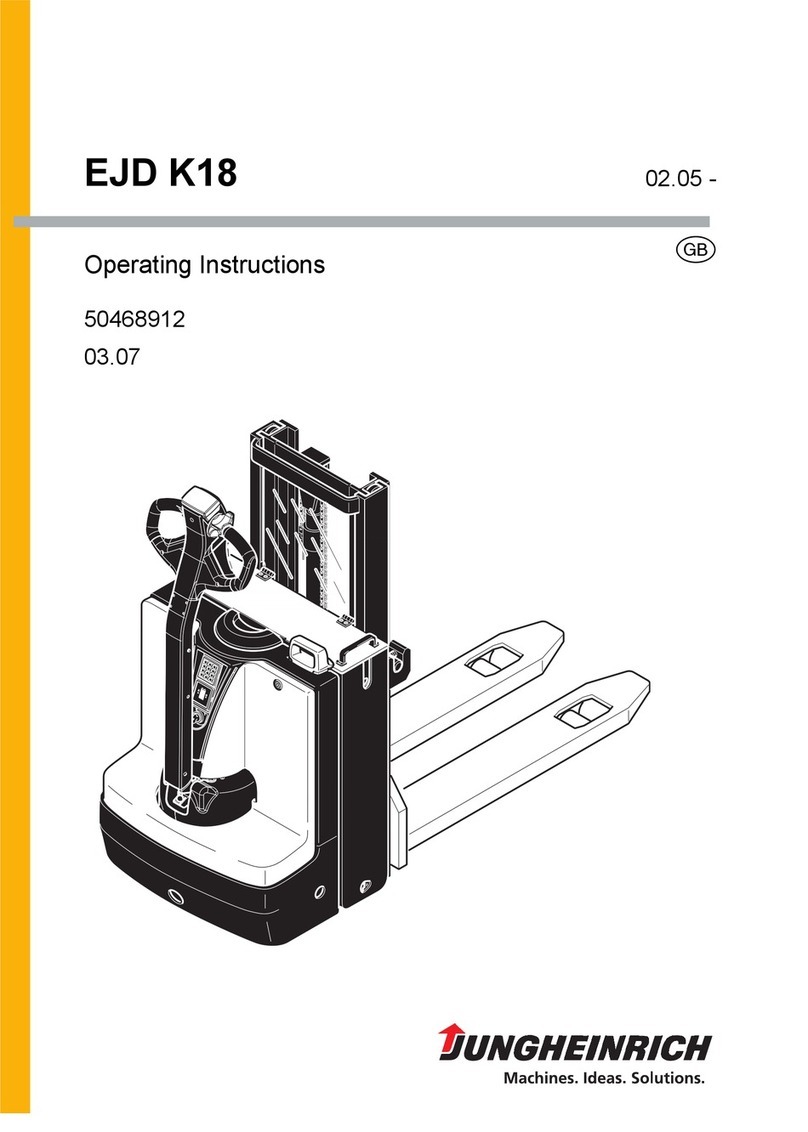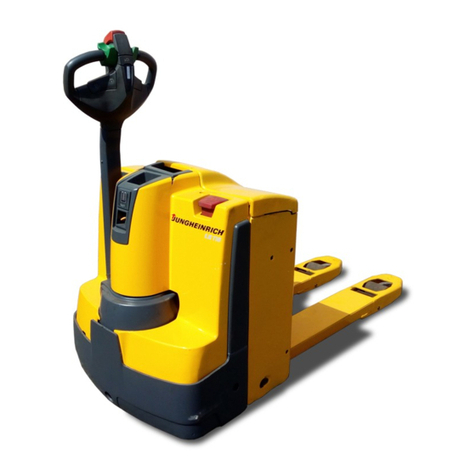
4
Active mast backward tilt angle control
When the tilt lever is operated backward from the
forward tilt position with the automatic fork leveling
control switch depressed, the fork automatically levels
itself (mast vertical) and then the mast tilting stops.
Note that only the load conditions changes its opera-
tion as shown below:
The value of load weight judged as “loaded” is same as
the intermediate load on Active mast front tilt angle
control.
Active mast forward/backward tilt speed
control
• At a high lift, the mast forward or backward tilt
speed is controlled (slowed down) regardless of
load weight. Even if the lifting height changes from
high to low while the mast tilts forward or bac-
kward, the control speed will remain in effect.
• At a low lift, the mast can be tilted backward at full
speed regardless of load weight. If the tilt lever
knob button is turned on and the mast tilted
backward at a low lift, the backward tilt speed
of the mast is controlled (slowed down) as long
as the tilt lever knob button is turned on.
• If the forks are raised from a low lift to a high lift
while the mast is tilting backward, the control
speed will remain in effect as long as the tilt lever
knob button is turned on. The mast tilts backward
at the maximum speed when the tilt lever knob
button is turned off.
• The forward/backward tilt speed control is contro-
lled by the rpms of the pump motor. Never lift at a
high lift or perform simultaneous operation of atta-
chment and tilt.
Key-lift interlock
With the key switch at OFF, the forks will not lower
even if the lift lever is so operated.
Active steering synchronizer
If the steering wheel knob is not aligned with the tires,
the offset will be corrected automatically while the
steering wheel is turned. Thus, the knob is kept at a
constant position relative to the tires.
If the SAS feature should fail:
An SAS model is controlled with a controller, sensors
and various actuators. If any of them is found not to be
operating normally, the following may occur:
• Steering wheel knob offset may not be corrected.
• Such features as automatic forks leveling control,
active mast forward tilt angle control and active
mast forward/backward tilt speed control may be
disabled.
• Swing lock may not be unlocked.
If any of the phenomena referred to above should take
place,
• Diagnosis operation indicator will come on.
• An error code will be displayed.
• A buzzer will sound.
Thus, the operator will be informed. In such an event,
move the vehicle to a safe location and have it repaired
at a Toyota dealer.
OPS SYSTEM
The OPS (Operator Presence Sensing) system prevents
traveling and load handling operations when the opera-
tor is not seated in the operator's seat. If the operator
leaves the seat while the vehicle is in operation, the
OPS indicator will be displayed on the screen and a
buzzer will sound for 0.5 seconds to inform the opera-
tor that the system is going to be activated. If the ope-
rator remains away from the seat for 2 seconds, the
system will be activated and stop the current operation.
However, if the operator returns to the seat within 2
seconds, the system will not be activated and operation
can be continued normally.
If an error occurs within the OPS system, an error code
will be displayed on the screen to inform the operator
of the error. This indicates that the OPS system may be
faulty. Have the vehicle inspected by your Toyota dea-
ler.
This vehicle is equipped with the OPS system. Con-
firm the functions of the OPS system before operation.
Not loaded Loaded
High lift
height Stop with leveling forks
(mast vertical)
Stop with mast vertical (or
up to 1° to rear side) depen-
ding on the load
Low lift
height
Travel OPS Functions
When the coltroller detects the seat switch turned off
for two seconds, the drive motors stop afeter acting as
the regenerative brake.
Travel OPS is released by returning the direction lever
aand accelerator pedal to the neutral position and tur-
ning on the seat switch. On the D2 pedal vehicle or the
Double Accel pedal vehicle, releasing the accelerator
pedal makes the direction signal neutral, then it cancels
the travel OPS.
Here, the degree of the regenerative brake changes
depending on the detected height and weight of the
load as follows:
Load Handling OPS Functions
Mini-lever or joystick vehicle
When the controller detects that the seat switch is tur-
ned off for 2 seconds, controlling the electric propor-
tional valves stops the movements of lift, tilt, and
attachments. At the same time, the lift lock valve and
tilt control valve stop lifting down and tilting forward.
The movement of lift up and attachment are also stop-
ped because the supply of the hydraulic oil is intercep-
ted by controlling the unload valve.
Hydraulic function OPS is released by returning all the
levers to the neutral positions and turning on the seat
switch.
OPS Operation Alarm Functions
When the controller detects that the seat switch is tur-
ned off, the onboard buzzer in the multi-function dis-
play informs OPS operation to the operator by sound
(pi-) for 1 second. And the multi-function display turns
on the OPS indicator in advance at that time.
If the operator notices it and sits down before 2
seconds pass, the OPS will not activate.
In order to inform that the OPS is operating, the OPS
indicator keeps being turned on while the seat switch is
turned off.
Load Handling Functions
When the seat switch is turned on without returning the
hydraulic control lever to the neutral position, soun-
ding (pipipipi) informs the operator that the hydraulic
function OPS is not released.
Return to neutral warning
When traveling motion is stopped by the OPS system,
sitting in the seat and depressing the accelerator pedal
without returning the direction lever to its neutral posi-
tion will sound a buzzer to indicate that the motion
stop has not been released. Sitting in the seat with the
accelerator pedal depressed will also activate this
alarm.
OPS Controller Abnormality Warning
If an error occurs within the OPS system, an error code
is displayed on the screen to inform the operator of the
error. This indicates that the OPS system may be
faulty. Park the vehicle in a safe location and have it
inspected by your Toyota dealer. Also, in any of the
following cases, stop operation and have the vehicle
inspected by your Toyota dealer.
• The OPS indicator is not displayed on the screen
when the operator leaves the seat.
• The OPS indicator does not turn off when the ope-
rator sits in the seat.
Recycling/Discarding
In accordance with EU Directive 2006/66/EC, this
symbol indicates “separate collection” for all batteries
and accumulators.
Your trucks uses a lead accumulator and, in case of
some battery powered truck, a lithium battery.
Materials contained in batteries (include accumulators)
are hazardous to the environment and humans, so bat-
teries should be returned to the manufacturers for
recycling.
Light load (no load) Loaded
High lift
height
Regenerative brake same as
that of the accelereator pedal
off
The regenerative brake
decreases as the weight of
load increases
Low lift
height Regenerative brake same as that of the accelereator pedal off
(En-3)

